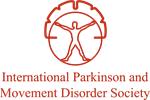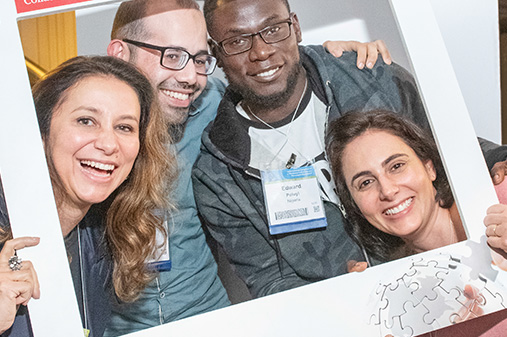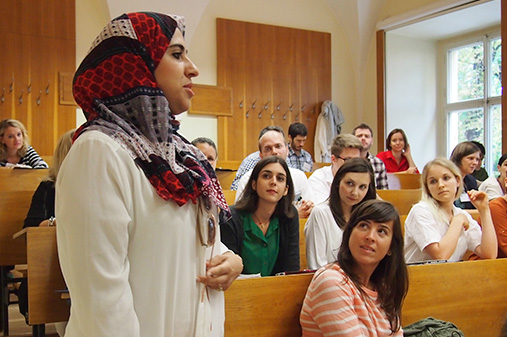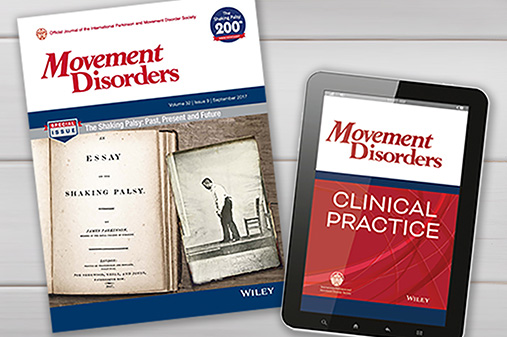Highlights for dystonia • 2025 MDS Congress
Dr. Divyani Garg: [00:00:00] Welcome to the MDS Podcast, the official podcast of the International Parkinson and Movement Disorder Society. I'm your host, Divyani Garg from New Delhi, India. And in today's episode, I'm very happy to welcome Professor Susanne Schneider from Germany and we will be chatting about dystonia. So dystonia has always fascinated movement disorder neurologists for over a century, and we will be talking about some of the recent advances and nuances in dystonia, particularly the updates that have recently happened in this area. Welcome Susanne to the podcast.
View complete transcript
Dr. Susanne Schneider: Thank you for having me.
Dr. Divyani Garg: So I just wanna begin by asking you just for as an introduction to our listeners, how common is dystonia?
Dr. Susanne Schneider: I wanna say that dystonia , it differs for the different types of dystonia. And we can use different epidemiological measures to describe the occurrence of the disease in a population, including incidence and prevalence. And when asking for the incidence, this gives the rate of new [00:01:00] cases that occur in a specified time period.
And for adult onset, isolated cervical dystonia, for example, the incidence has been reported to be around one per a hundred thousand per year.
Overall, one can say that the adults onset dystonia are more frequent compared to the childhood onset forms
Dr. Divyani Garg: So let me now plunge into the recent updates. So the dystonia definition and the classification has very recently been modified and updated. So could you just walk us through that and what were the reasons for these changes?
Dr. Susanne Schneider: Yes, in 2013, I believe it was that the Movement Disorder Society had formulated a consensus definition and classification system for dystonia, which had two axes. It was led by Alberto Albanese, and then this summer in July, they have published a revised version of that which really updated the wording and refined the two axis classification in more detail.
Overall, I wanna say that there was brought consensus to retain the definition of dystonia with only minor clarifications to the wording. So [00:02:00] dystonia continues to be defined as a movement disorder, which is characterized by sustained or intermittent, abnormal movements, postures, or both. And they're typically patterned, right?
And repetitive and maybe tremulous or jerky, and they're often initiated or worsened by voluntary action. So some revision has now been made to this two axis approach, which summarized the key clinical characteristics. So to give an example in axis one we now see a new category. So phenomenology, for example, has been added to capture the relationship with voluntary movement.
Then there's a change to the temporal dimensions and the original classifications. We only had two dimensions which were disease course and variability. And our third dimension has been ended which is onset. And a third example to access one would be body distribution, because in the past this was not precisely defined and often inconsistently applied across centers.
Now in the future, one can choose from [00:03:00] a uniform list of seven body regions to capture the presence of dystonia. And then in axis two, an example would be that a new section on mechanisms has been added, which lists most common pathogenic disease mechanisms. So it reflects really our enhanced overall understanding of disease biology.
So in summary, I wanna say that the majority of the classification has been retained, but there've been minor adjustments.
Dr. Divyani Garg: Okay. That's really helpful actually, that you have summarized it. And just taking off from the last point that you mentioned, regarding the pathophysiological mechanisms that I have incorporated what is our current understanding of the pathogenic mechanisms in dystonia?
Dr. Susanne Schneider: In the past, dystonia was thought to be due to a circumscribed basal ganglia lesion. But now with modern evidence. It's thought to be a network disorder, which not only produces abnormal function in the basal ganglia, but also reaches other regions, including the cerebellum, thalamus and sensory motor cortex, rather than being a single site lesion.
[00:04:00] So I think key mechanisms would be altered inhibitory and excitatory balance with reduced surround inhibition, but also, as I've mentioned, the involvement of the cerebellum and the abnormal sensory mortar integration.
Dr. Divyani Garg: So I wanted to ask you that in dystonia, particularly with regards to the phenomenology, there tends to be a bit of interative variability that leads to a diagnostic challenge. So what are some of the main challenges in the diagnosis and how can we improve our clinical diagnosis?
Dr. Susanne Schneider: Indeed dystonia may be mistaken and mislabeled as the diagnosis can be challenging. So people may mistake it as an orthopedic or a focal neuropathic problem or a psychiatric disease. I think there are various reasons for that. There's lack of standardized training or case exposure, not only in underserved countries, but across the world.
So there's also lack to, get to movement disorder specialist and limited access to genetics and other specialized testing. So I think what we could do to improve this is to [00:05:00] enhance the knowledge about dystonia and improve the recognition by providing education and training. And I think the movement disorder societies so important here and it's doing a fantastic job of offering educational programs of various kinds.
We should improve the phenotyping, for example, by implying the two axis consensus classification we've just talked about. And likewise, the use of validated clinical scales can help to capture the distribution in a standardized manner. I also use high quality video documentation from my patients for long-term documentation.
And this can also be used when contacting a colleague abroad for remote consultation for a second opinion.
Dr. Divyani Garg: Yeah, absolutely. Those are really important points and I just wanted to move from diagnostics a little bit to the therapeutics of dystonia because that has seen a bit of advancement particularly in terms of the animal models and some of the cellular models. But I wanted to speak to you particularly about the monogenic form that you talked about in your wonderful lecture yesterday at the MDS [00:06:00] Congress, which was on the NBIAs. What are these disorders?
Dr. Susanne Schneider: NBIAs are a group of heterogeneous disorders. NBIA stands for neurodegeneration with brain iron accumulation. And this is a mixed group which share that they all have iron accumulation in the brain, in particularly in the basal ganglia, but also in other regions in some of the subtypes. Some of the most common forms are the pantothenic kinase associated neurodegeneration called pecan or also PKAN nowadays, which accounts for about half of the cases. You can pick these up by doing an MRI scan and looking for the iron. The eye of the tiger sign is one of the common or commonly recognized patterns.
Dr. Divyani Garg: All right. And I just wanted to move towards what you spoke about yesterday, which was the precision therapies. Can you tell me a little bit about that? And I know that you spoke about targeting the upstream pathways, the downstream pathways, but also gene therapies. Could you just take us through that?
Dr. Susanne Schneider: Yeah, I mean given that there's iron accumulation in the brain. One of the general approaches was to remove the iron [00:07:00] using iron colitis, and that has been tried in some of the subtypes. It does effectively wash out iron as you can pick up on follow up MR imaging. It's clinically less so effective in some of the subtypes, so even in PKAN.
There's only limited clinical benefit from it in aceruloplasminemia. It seems to work. And there's currently a trial ongoing for neuroferritinopathy. The number of randomized control trials is still limited. But as I say, in neuroferritinopathy, there's one ongoing at the moment.
Dr. Divyani Garg: And it's very interesting that these are considered classically to be iron deposition disorders, but somehow the strategy for. Removing iron out of the brain doesn't seem to clinically benefit the patient, even though I know that MRI studies have demonstrated that the iron deposition gets lowered.
So why do you think that is?
Dr. Susanne Schneider: Great question. I think that only a, for a small proportion, we know that there is a clear link between the underlying genetic defect and iron metabolism. So including for acerplasmanemia or neuroferritinopathy, the link has been established, [00:08:00] whereas for the majority of NBIA subtypes the role of iron from the causative point of view seems unclear. So it may well be that iron is only an epiphenomenon in the neurodegenerative process.
Dr. Divyani Garg: And I also learned that gene therapies are being tried for some of these disorders, particularly the PLANs. Could you tell us about that?
Dr. Susanne Schneider: Yeah, so another general approach is to apply gene therapy. We are still in preclinical stages, but I think this is gonna be very exciting to see what the field comes up with. As you've mentioned PLAN is the subtype for which gene therapy is most advanced. And there are two groups one in the US and one in England, in the UK that run these programs. And I think they're preparing first human trials at the moment.
Dr. Divyani Garg: Alright, Susan, I just wanted to ask you, is there anything that you want to let our listeners know regarding the therapeutics of the nbias?
Dr. Susanne Schneider: I think it's very exciting to see all the concerted efforts that are ongoing and whilst at the time being treatment remains symptomatic and the [00:09:00] randomized controlled trials. I think it's very exciting to see what's happening. There are lots of concerted efforts to find tailor-made treatments for the time being none of the randomized control trials have been able to show disease modifying effects. But I think there's so much happening in the field and I'm very much looking forward to see what the future's gonna bring for us.
Dr. Divyani Garg: Thank you so much Susanne for joining me here today. It has been wonderful conversing with you.
Dr. Susanne Schneider: Thanks for inviting me.

Susanne A. Schneider, MD, PhD
University Medical Center of the Johannes Gutenberg University Mainz
Mainz, Germany









